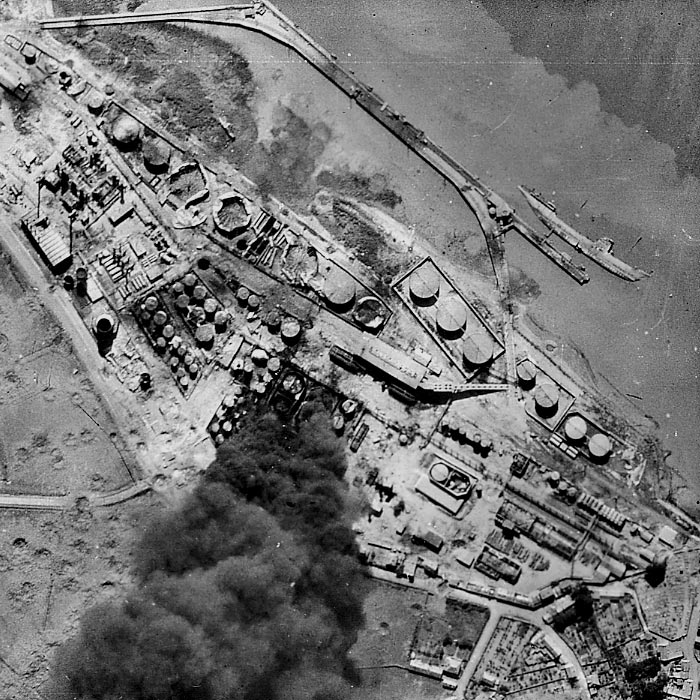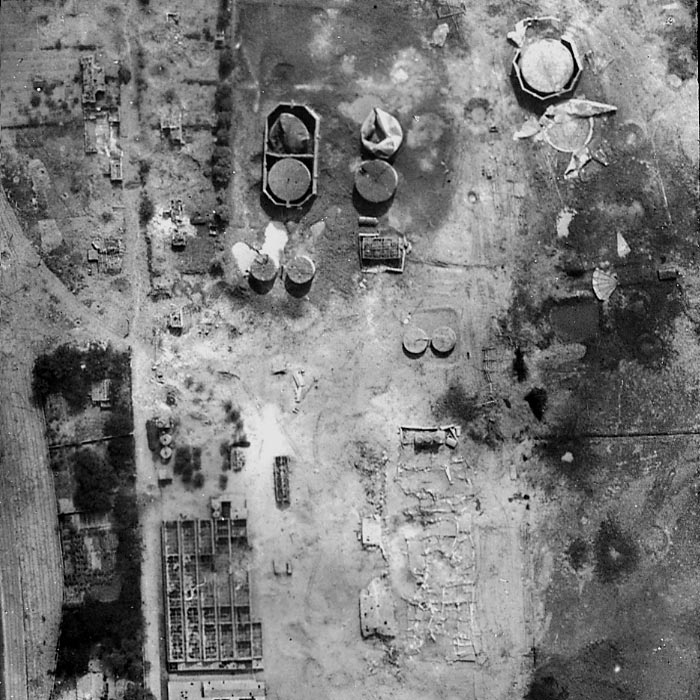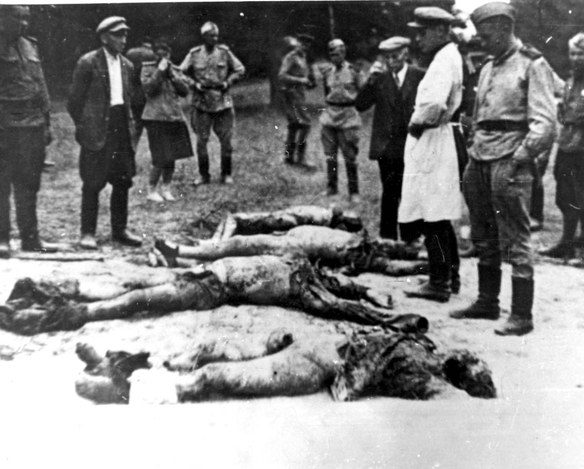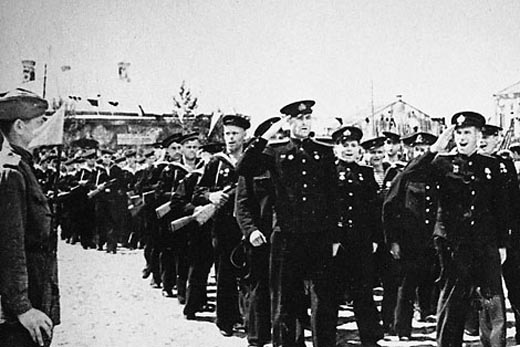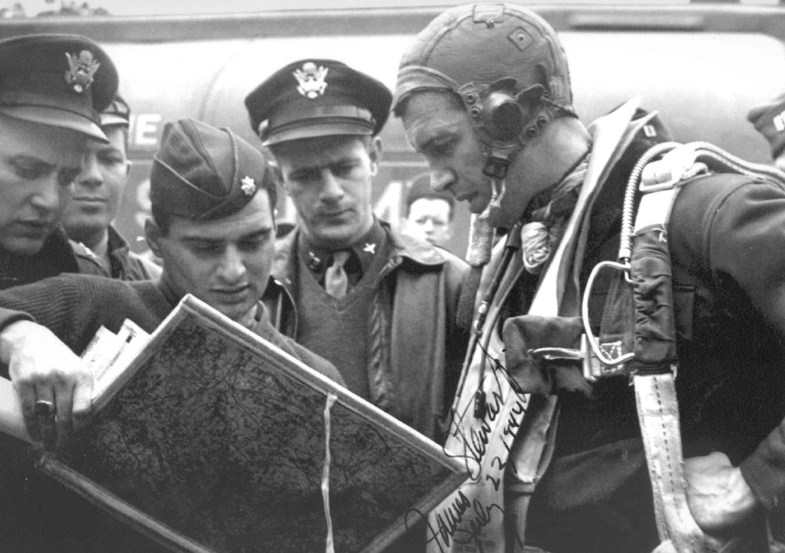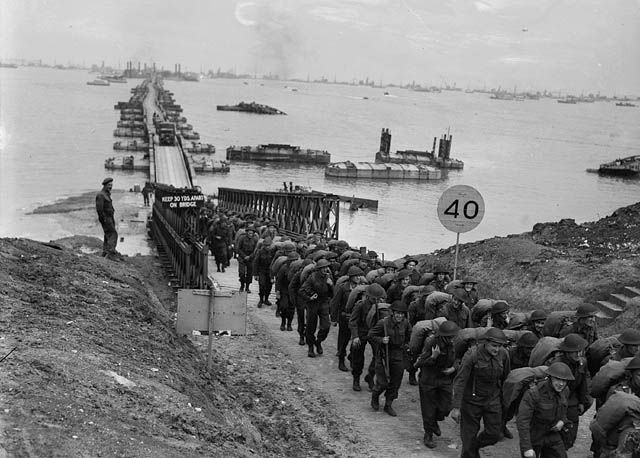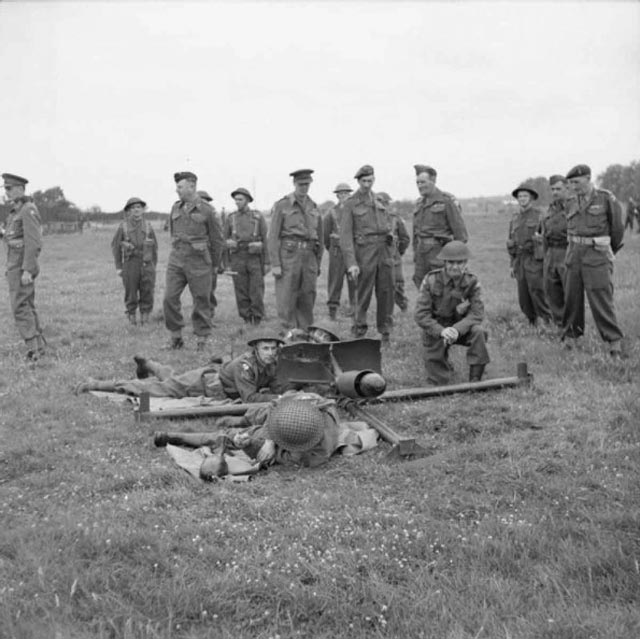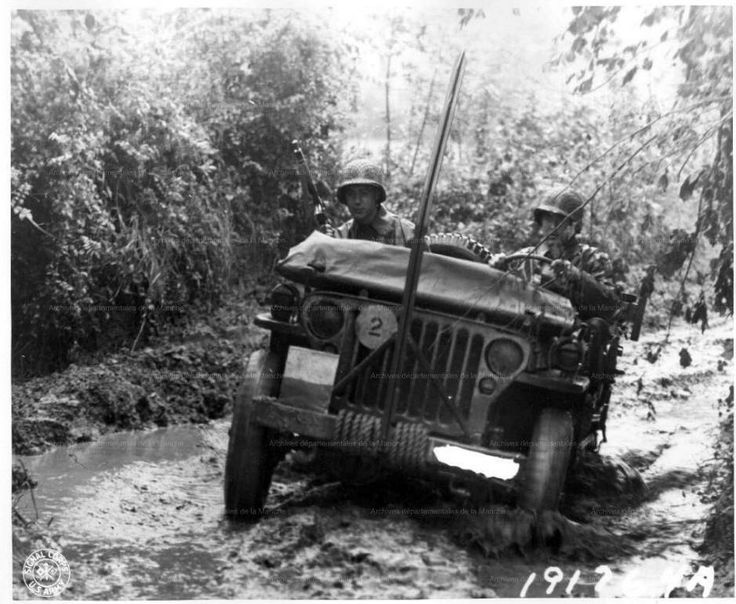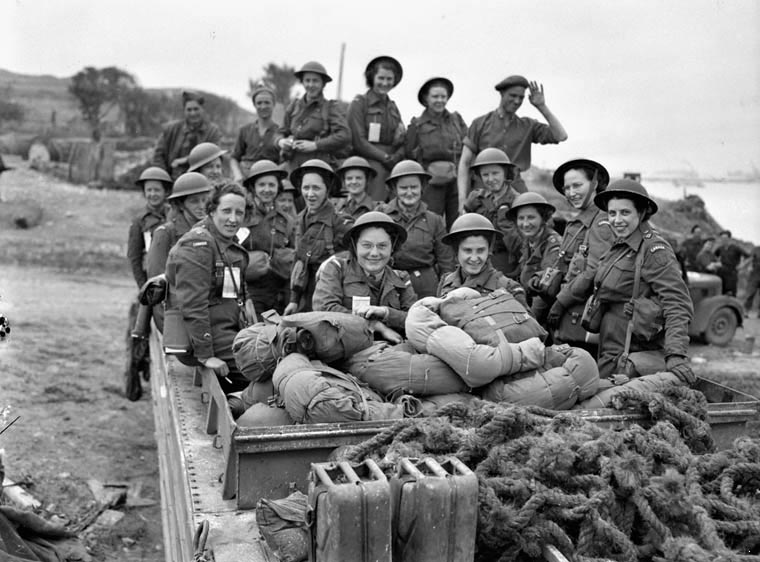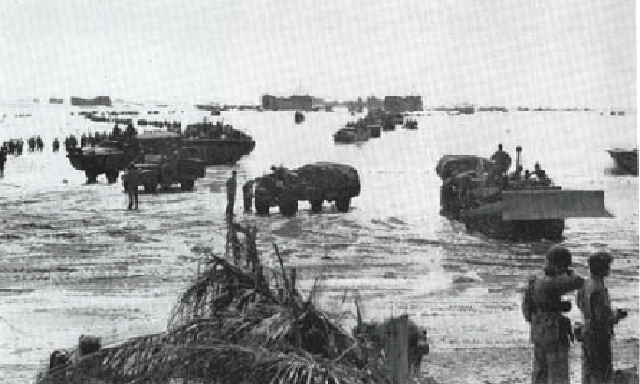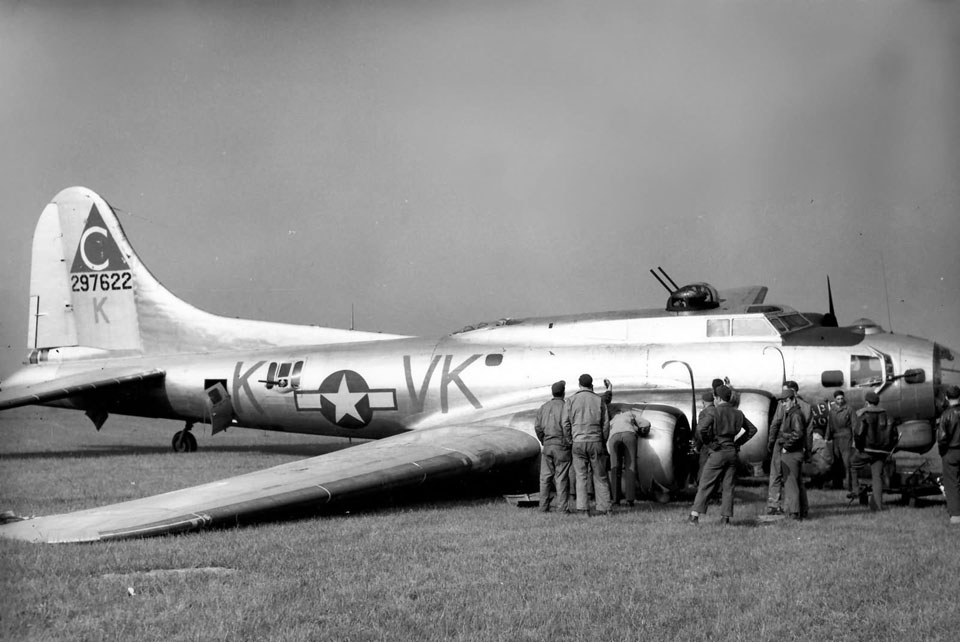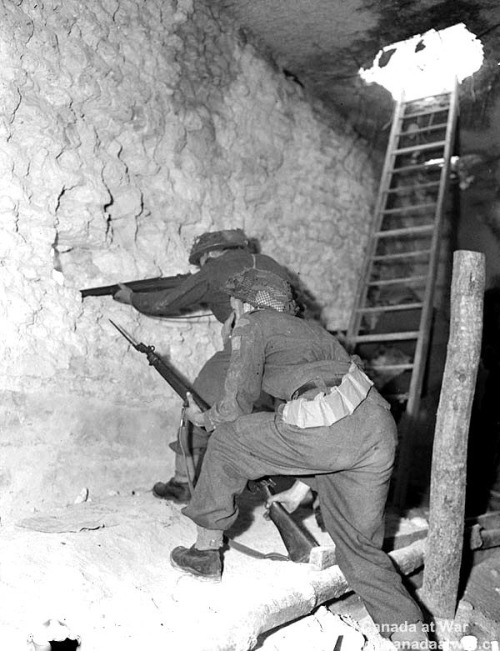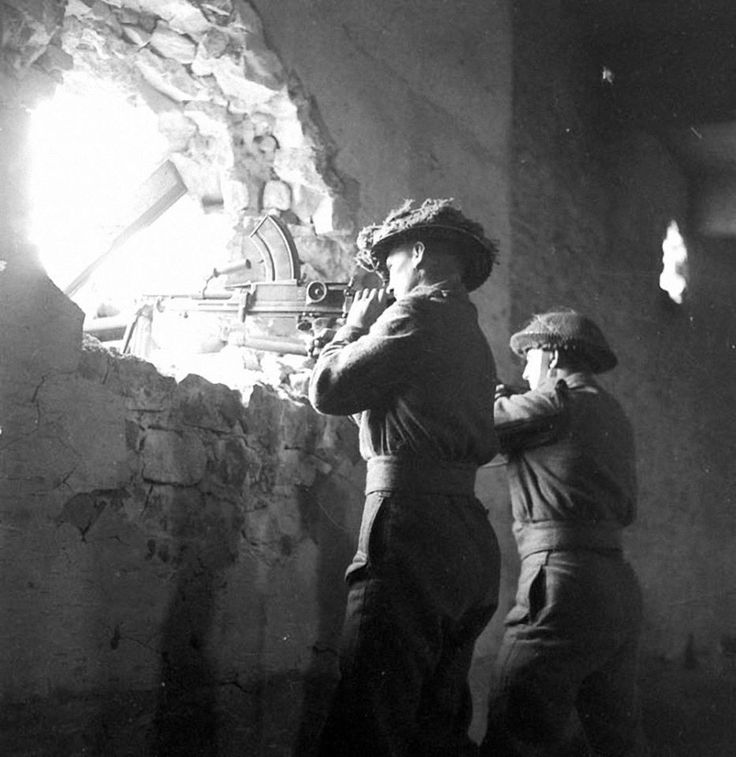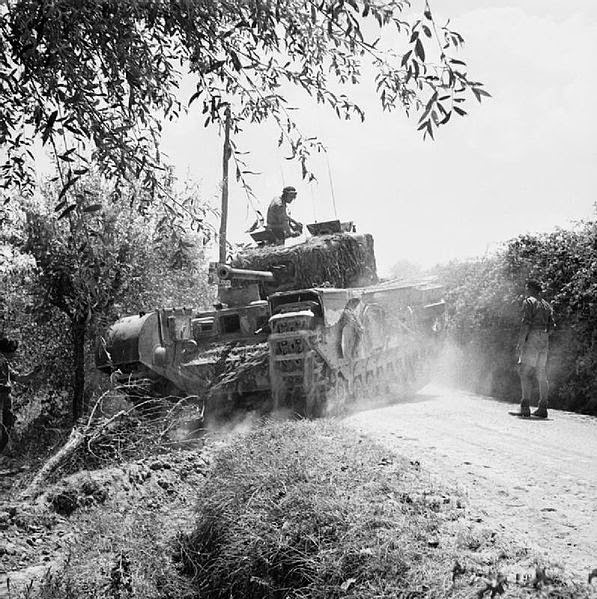Air Operations, Carolines
- VII Bomber Command B-24s attack the Truk Atoll.
- FEAF B-24s attack the Yap Atoll.
Air Operations, CBI
BURMA- 9 10th Air Force B-25s attack targets around Myitkyina and Naungtalaw.
- 8 B-25s attack Namting.
- More than 100 10th Air Force fighter-bombers attack Japanese Army positions throughout the Myitkyina area, support Allied ground forces, and attack Kamaing, Mogaung, and other areas.
- 62 14th Air Force P-40s attack the airfield at Siangtan, Hengyang, and troops and other targets over a wide area. 6 B-25s and 21 P-40s attack rail facilities and warehouses in the Yellow River area.
- 10 P-40s support Chinese Army ground troops on the Salween River front.
- 3rd CACW Fighter Group P-40s down 11 Japanese fighters at 0830 hours over Yunglowkiang.
Air Operations, Europe
RAF BOMBER COMMANDDaylight Ops:
- 48 Lancasters and 12 Mosquitos of Nos. 3 and 8 Groups bomb flying bomb sites at Forêt de Croc and Mont Condon through thick cloud.
- There are no losses.
- 629 aircraft are sent to Kiel, the first major raid on a German city in more than 2 months. Included in this total are 519 Lancasters, 100 Halifaxes and 10 Mosquitos. The elaborate deception and RCM operations combined with the surprise return to a German target completely confuse the German fighter force and only 4 aircraft - all Lancasters - are lost. The city suffers heavily in this first RAF raid since April 1943 and its heaviest RAF raid of the war. The bombing force appears suddenly from behind a Mandrel jamming screen and the local radio warning system only reports it as being a force of mine-laying aircraft. 612 aircraft then bomb in a raid lasting only 25 minutes. All parts of Kiel are hit but the bombing is particularly heavy in the port areas and all of the important U-boat yards and naval facilities are hit. The presence of around 500 delayed-action bombs or unexploded duds cause severe problems for the rescue and repair services. There is no water for 3 days. Trains and buses do not run for 8 days and there is no gas for cooking for 3 weeks.
- 100 Halifaxes, 14 Lancasters and 5 Mosquitos of Nos. 6 and 8 Groups attack an oil refinery and storage depot at Donges, near the mouth of the Loire River. This is the beginning of a new campaign against oil targets in occupied countries. The bombing takes place in good visibility and the target is severly damaged. A tanker is also hit and capsizes.
- There are no losses.
- 102 Halifaxes, 12 Mosquitos and 2 Lancasters of Nos. 4 and 8 Groups attack 2 flying bomb sites with great accuracy.
- 1 Halifax is lost on the raid to Les Hauts Buissons.
- Support and 180 aircraft from training units make a diversionary sweep over the North Sea, 27 Mosquitos are sent to Berlin and 5 to Düren, 6 Lancasters lay mines off Kiel and 2 Stirlings off Brest, 12 aircraft are on Resistance operations, and there are 45 Mosquito patrols and 39 RCM and 8 OTU sorties.
- 1 mine-laying Lancaster is lost on the Kiel run.
FRANCE:
- Employing GH radar guidance, 78 1st Bomb Division B-17s attack the Creil Airdrome.
- A total of 166 2nd Bomb Division B-24s attack the Juvincourt, Laon/Athies, and Laon/Couvron Airdromes.
- Escort for the heavy bombers is provided by 177 VIII Fighter Command fighters.
FRANCE:
- More than 330 IX Bomber Command B-26s and A-20s from all eleven IX Bomber Command groups attack nine rail bridges and a fuel dump. Most of these attacks are carried out under cloudy conditions with the aid of pathfinders.
- IX TAC fighters and fighter-bombers attack strongpoints, bridges, and a supply dump in and around the battle area.
ITALY:
- 12th Air Force B-25s and B-26s attack bridges and bridge approaches in the Po River valley, and small flights of XII TAC fighter-bombers attack lines of communication in the battle area and throughout the Po River valley.
ALBANIA:
- 42 15th Air Force B-24s, escorted by 15 P-51s, attack oil industry targets at Berat.
Air Operations, Marianas
The pre-invasion air, naval, and artillery bombardment of Tinian is concluded.
Following a break in operations lasting several weeks, Task Force 52 escort-carrier aircraft rejoin the Marianas operation with the first of three July 23 attacks against Tinian’s landing beaches by 19 TBMs and 32 FMs. Through July 23, aircraft from Fleet Carrier Air Group 15 (USS Essex) and Light Carrier Air Group 32 (USS Langley) mount nearly 200 sorties against ground targets on Tinian, aircraft from VC-10 (USS Gambier Bay) and VC-5 (USS Kitkun Bay) mount 50 sorties against ground targets on Tinian, and 318th Fighter Group P-47s mount more than 100 sorties against ground targets on Tinian. Ground-attack and ground-support missions by escort-carrier and Saipan-based aircraft, amounting to an average of 175 sorties per day, will continue through the end of the Tinian operation.
[Air Operations, New Guinea
V Bomber Command B-24s, B-25s, and A-20s, and V Fighter Command fighter-bombers attack the airfield at But, port facilities throughout the Vogelkop Peninsula, offshore islands, and coastal targets in the Wewak area.
[Allied Command
Generalissimo Chiang Kai-shek sends a message to Roosevelt confirming that he is prepared to give Gen Stilwell command of the Chinese forces. His conditions are that the Chinese Communist army, before coming under Gen Stilwell's command, should recognize the authority of the Nationalist government; that Gen Stilwell's responsibilities are clearly specified; and that the Chinese should have complete right to aid received under the Lend-Lease Act.
[Baltic Sea
U-239 was never operational and was only used for training purposes. She is damaged beyond repair in an RAF bombing raid on the port of Kiel.| Class | Type VIIC |
| CO | Oberleutnant zur See Ulrich Voge |
| Location | Baltic, Kiel |
| Cause | Air attack |
| Casualties | 1 |
| Survivors | Unknown |
CBI
BURMAUnder pressure by the Allied attack on Myitkyina, Japanese forces begin to withdraw.
On the Salween front, the 8th Chinese Army, renewing the attack on Sung Shan with 3 regiments supported by the direct fire of howitzers, makes substantial progress.
Mountbatten proposes two operations to be carried out as soon as possible: Operation CAPITAL, an offensive across the Chindwin River, and Operation DRACULA, an attack in the Rangoon area to be carried out by amphibious and airborne troops.
CHINAGeneralissimo Chiang Kai-shek, in a message to President Roosevelt, reaffirms his willingness to place Gen Stilwell in command of the Chinese forces but specifies 3 conditions that must be met: (1) Chinese communists, before coming under the authority of Gen Stilwell, must agree to obey orders of the Chinese Government; (2) Stilwell's role must be clearly defined; (3) the Chinese must have full authority for lend-lease distribution.
[Eastern Front
The Soviet forces of the 3rd Baltic Front capture Pskov - the last major town of the prewar Soviet Union in German hands. Farther south troops from 1st Ukraine Front enter Lublin. Fighting there continues. They also capture the Maidanek extermination camp.
In the German command Field Marshal Ferdinand Schörner replaces Gen Hans Friessner at Army Group North. Friessner had made the mistake, in Hitler's eyes, of insisting on authority to withdraw his army group in the face of possible encirclement in the Baltic states.
NORTHERN SECTORPskov falls to the Soviet 42nd Army.
CENTRAL SECTORThe 65th Army closes on Brest-Litovsk. The Germans have concentrated the largely intact 2nd Army around the town and prepare to halt the Soviet advance.
Farther south the 8th Guards and 2nd Tank Armies fight their way into Lublin, liberating the Majdanek concentration camp on the outskirts of the town. Inside Lublin itself there is heavy fighting as the 4th Panzer Army puts up a strong defense.
SOUTHERN SECTORThe 1st Guards Tank Army crosses the San River near Yaroslav.
[Italy
Units of the US IV Corps enter the outskirts of Pisa but are only able to occupy the districts south of the Arno.[ITALY]
[Marianas
GUAMThe 3rd Marine Division succeeds in extending the northern beachhead on Guam to Point Adelup. Other units from the southern landing cross the neck of the Orote Peninsula cutting off the main Japanese airfield on the island. The 306th Infantry, 77th Division, lands at Agat and begins the relief of the 1st Provisional Marine Brigade in the southern beachhead. [New Guinea
In the Aitape area, Troops A and B of the 112th Cavalry, upon relief by the 1st Battalion of the 127th Infantry north of Afua, attack westward toward the isolated Troop C while the 2nd Battalion, 127th Infantry, moves in from the southeast. The cavalry recapture Afua with little difficulty. The 2nd Battalion reaches the perimeter of Troop C. The North Force frustrates further enemy efforts to secure a crossing of the Driniumor during the night of the 23rd.
On Biak, the final mop up of the Ibdi Pocket is begun.
On Noemfoor Island, patrols of 503rd Parachute Infantry re-establish contact with the main body of the Japanese defenders about 4 miles northwest of the village of Inasi, on the east coast.
[Occupied France
The Resistance sets fire to the Engelbert tire factory at Choisy-au-Bac.
[Pacific
- The British submarine Storm sinks the Japanese cargo ship Kiso Maru (554t) and fishing vessel Taiho Maru near Port Owen, South Africa.
- The Japanese guardboat Wakayoshi Maru is sunk by a mine, Hayatomo Seto, Inland Sea.
Poland, Politics
The formation of a Polish Committee of National Liberation is announced from Moscow. The London based Polish government calls it 'the creation of a handful of unknown communists'.
[Western Front
Gen Harry Crerar's 1st Canadian Army becomes operational.
Images from July 23, 1944
|
|
|
|
|
|
|
|
|
|
|
|
|
|
